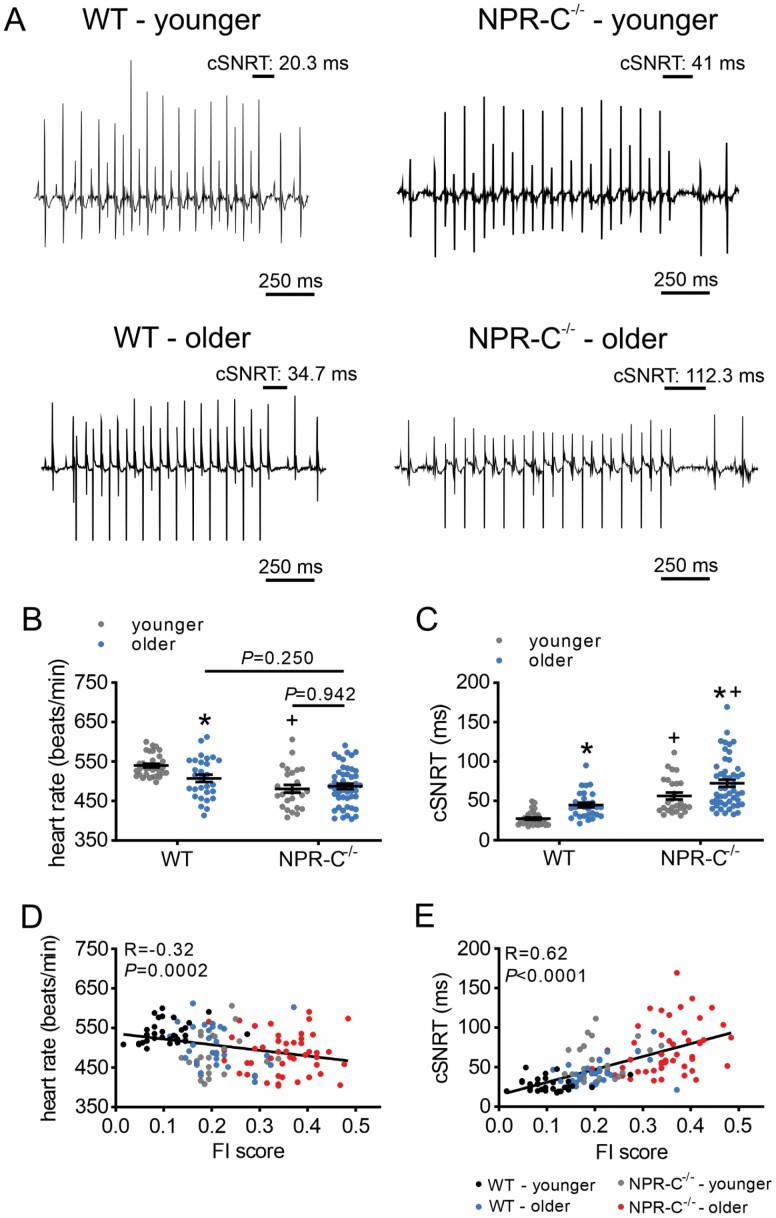Figure 2.
Effects of age and frailty on sinoatrial node function in WT and NPR-C−/− mice in vivo. (A) Representative recordings illustrating corrected sinoatrial node recovery time (cSNRT) in younger and older WT and NPR-C−/− mice. (B and C) Heart rate (B) and cSNRT (C) in younger and older WT and NPR-C−/− mice (males and females combined). *p < .05 versus younger, +p < .05 versus WT by 2-way analysis of variance with a Tukey post hoc test. (D and E) Heart rate (D) and cSNRT (E) as a function of FI score for younger and older WT and NPR-C−/− mice (same mice as panels B and C). n = 32 mice for WT younger, 29 for WT older, 26 for NPR-C−/− younger, and 48 for NPR-C−/− older. NPR-C = natriuretic peptide receptor C.

